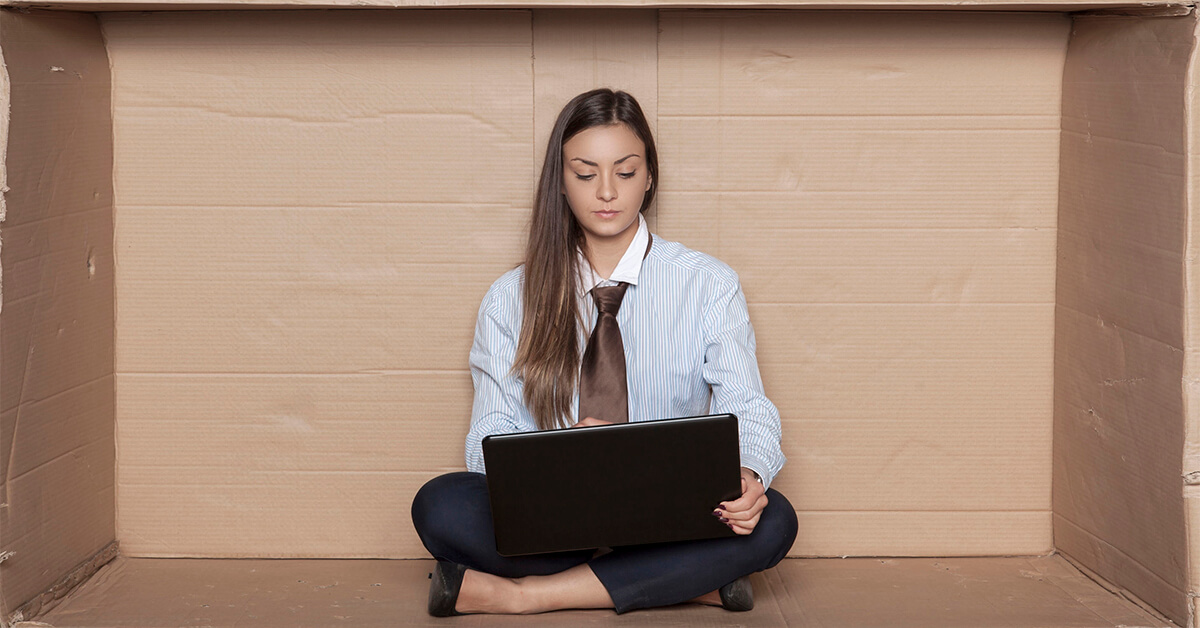More than a decade ago, open floor plans were heralded as the future of workplace design. The drab walls and cubicles that conjured images from the movie Office Space were no longer the norm. By then, companies could look and feel like hip, young startups with open space plans and team members sitting right next to each other.

However, in 2020, the workplace design shifted once again. The Coronavirus pandemic drew millions of employees home to work remotely. Now, the very idea of sitting close to someone seems dangerous and unhygienic. This has led some experts to ask: will companies ever return to the open floor plan? Or is it time to do away with that trend? Here’s what you need to know about this evolving workplace trend.
Open space wasn’t as popular as you think
The idea that your employees love the open floor plan and use it to improve collaboration is a myth. Multiple studies have found that workers become less productive and less engaged when they lack privacy. For example, one study by Harvard Business School and Harvard University found that participants in an open space office spent 73 percent less time in face-to-face interactions while their use of chat and email shot up 75 percent and 67 percent respectively.
The researchers theorized that sitting directly next to people made workers want to talk less. They were actually trying to be respectful to other team members by not distracting them with their conversations. Furthermore, the lack of privacy means some employees don’t feel as comfortable asking questions or speaking up, driving them to use online communication instead.
It seems as though employees treat cubicles like mini-conference rooms, but an open floor plan makes people think everyone is listening to them.
For this reason, the open space office has been decreasing in popularity over the past few years. It’s possible that the COVID-19 pandemic simply hastened its death knell.
More companies are transitioning to hybrid or even fully remote work
Before the pandemic, some companies were cautious about letting employees work remotely. They worried that productivity would drop as workers couldn’t collaborate and communicate with each other as easily. However, Coronavirus has forced teams to go remote, and some have seen that working from home isn’t as bad as they previously thought.
In May 2020, Jack Dorsey, CEO of Twitter told employees that they can continue working from home forever if they want. He’s letting employees decide whether working remotely is right for them. Dorsey isn’t the only executive with an eye on remote work. A Gartner survey of 317 CFOs and finance leaders released in April 2020 found that 74 percent thought at least part of the workforce would become remote permanently after the pandemic. Nearly one quarter speculated that at least 20 percent of the workforce could transition to remote work fully by the end of this year.
The benefits of transitioning out of an open space office and into a partially remote workforce are many for both the employees and the company. In 2015, when Citigroup transitioned to hotdesking to let employees work more remotely, they saved up to $10 million annually on office expenses. In areas with an expensive real estate market, like New York or San Francisco, companies can save significantly by using less space and letting people work from home. There’s no need for an open or closed floor plan if no one is in the office to begin with.
Open space will look different for sure
As states begin to re-open and workers return to the office, some people are questioning whether an open space is even safe. When you face someone directly, there’s no barrier between your germs and theirs. Illness can spread quickly, whether it’s Coronavirus or the seasonal flu. Social distancing is also significantly harder when you sit three feet away from the rest of your team.
The coworking space WeWork recently shared how it plans to adjust its open floor plan for the post-COVID-19 world. Desks are being moved farther apart and buffer seating with plants and extra space is being created. The company is also setting up sanitizing stations and limiting how many people can be in a conference room at once.
“I do think this is going to reshape the workplace,” says Janet Pogue-McLaurin, workplace leader at design and architecture firm Gensler. “Social distance thinking may be part of our DNA moving forward.”
Is open space gone forever?
Of course, all assumptions before don’t take into consideration that there are many open space offices that were designed with people in mind. Such workplaces will continue to serve their purpose with minimum changes.
For the rest, companies have three options: spread their open office further apart (and pay the real estate costs that come with it), let more employees work remotely, or put up barrier walls and cubicles to all teams to work together while still staying safe.
While we don’t know what’s to come when the Coronavirus pandemic will be over, one thing’s for sure: the office of tomorrow is going to look starkly different from the start-up open floor seating of the past decade.
2 Comments
You can post comments in this post.
Open place isn’t gone, may be it’s just taking a break. Though this pandemic forced remote working but certain percentage of employees still love to go to office, if not regularly at least occasionally.
Virat 4 years ago
I completely agree. Humans are social creatures and nothing beats the face2face interaction!
Elena Carstoiu 4 years ago
Post A Reply